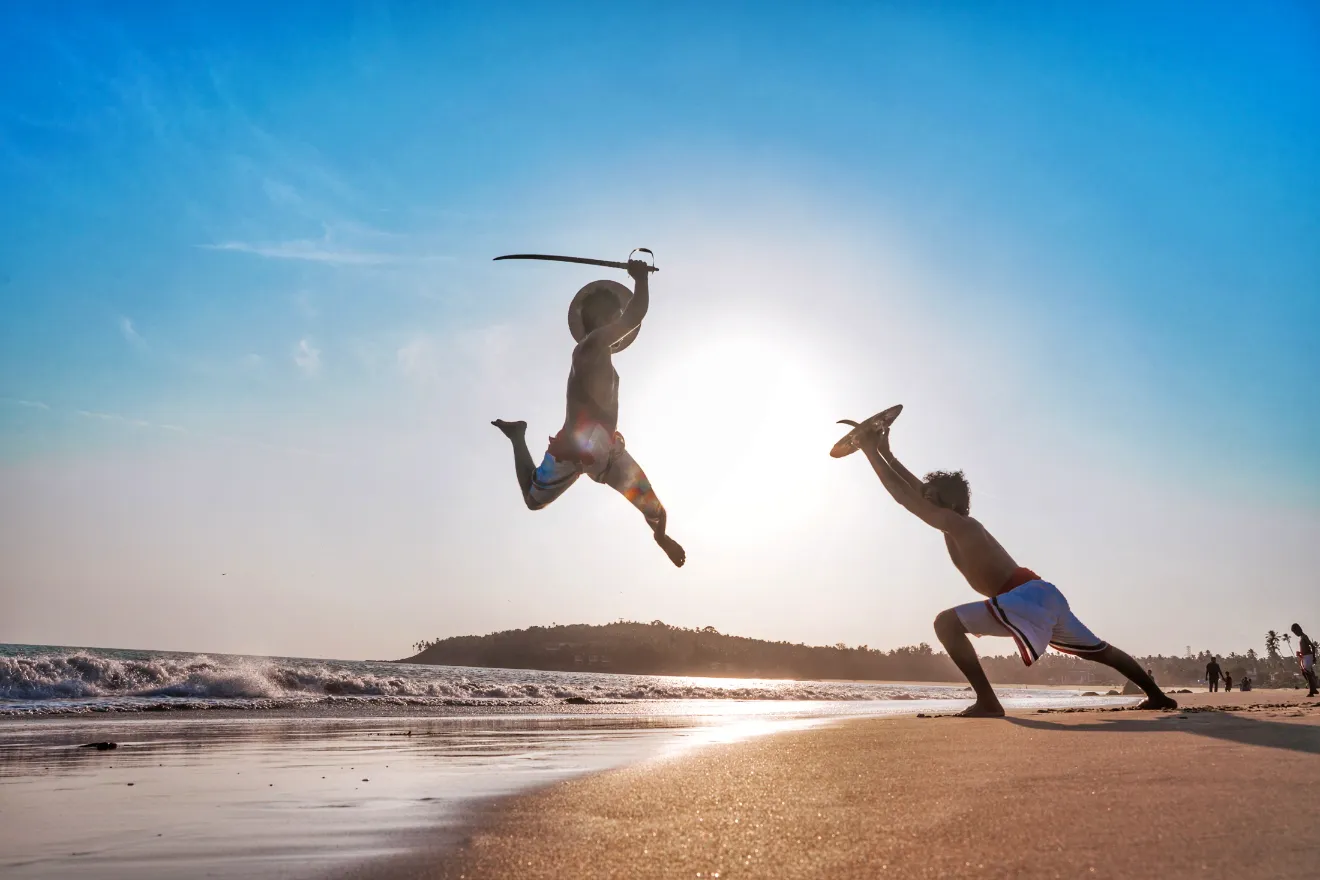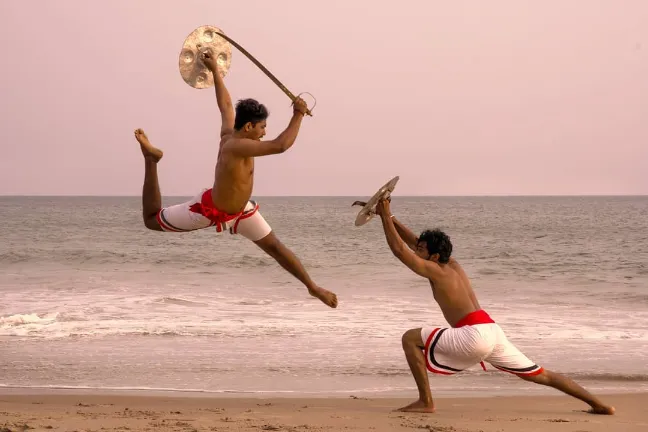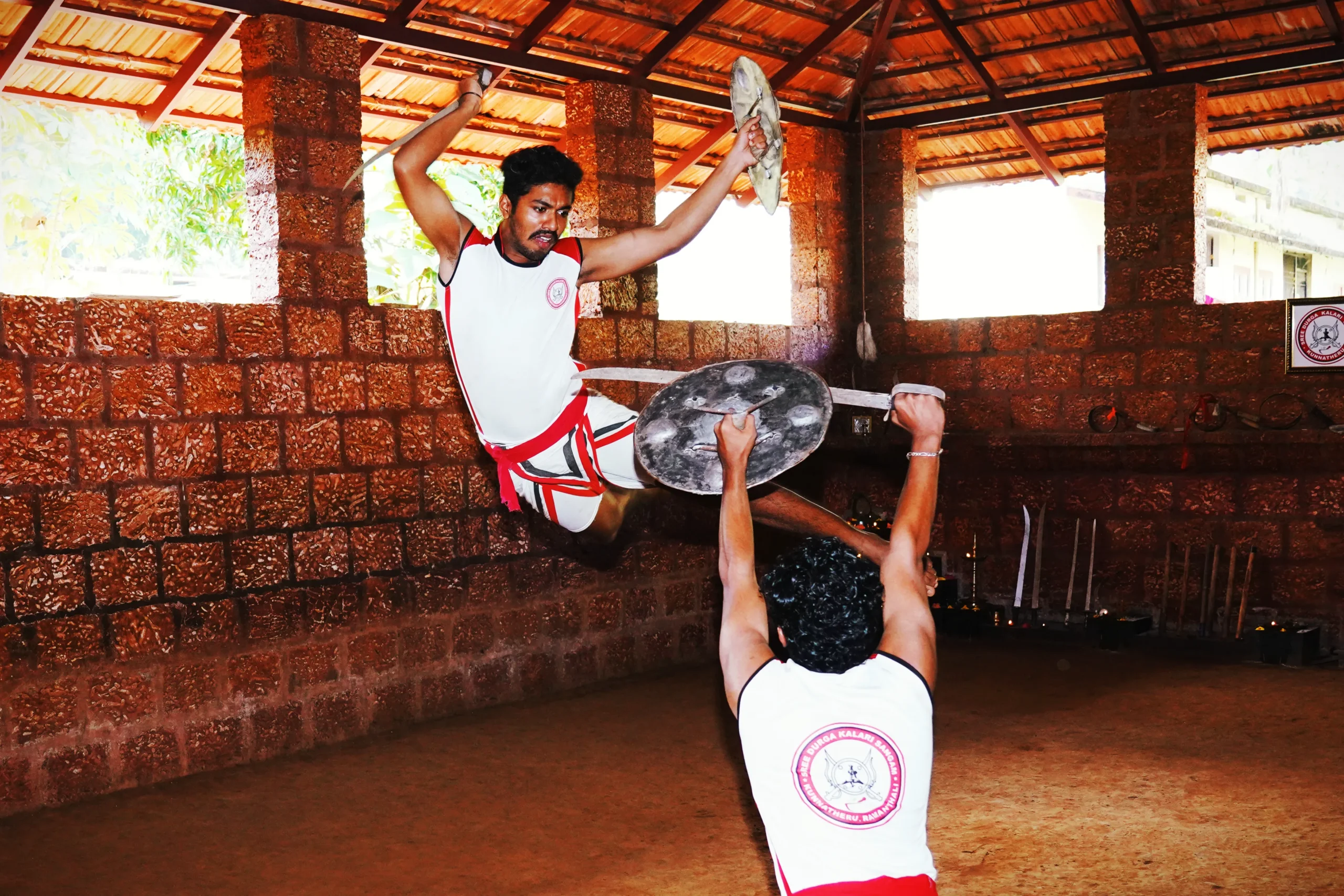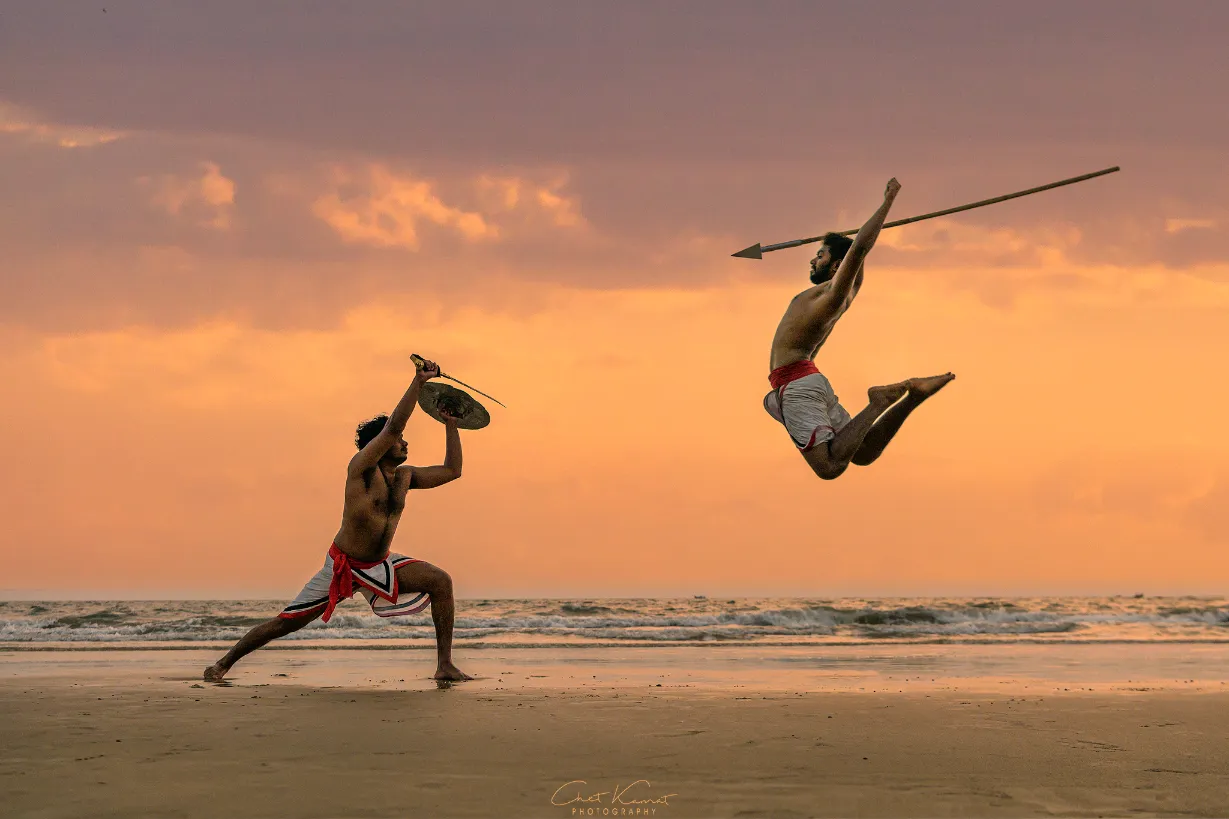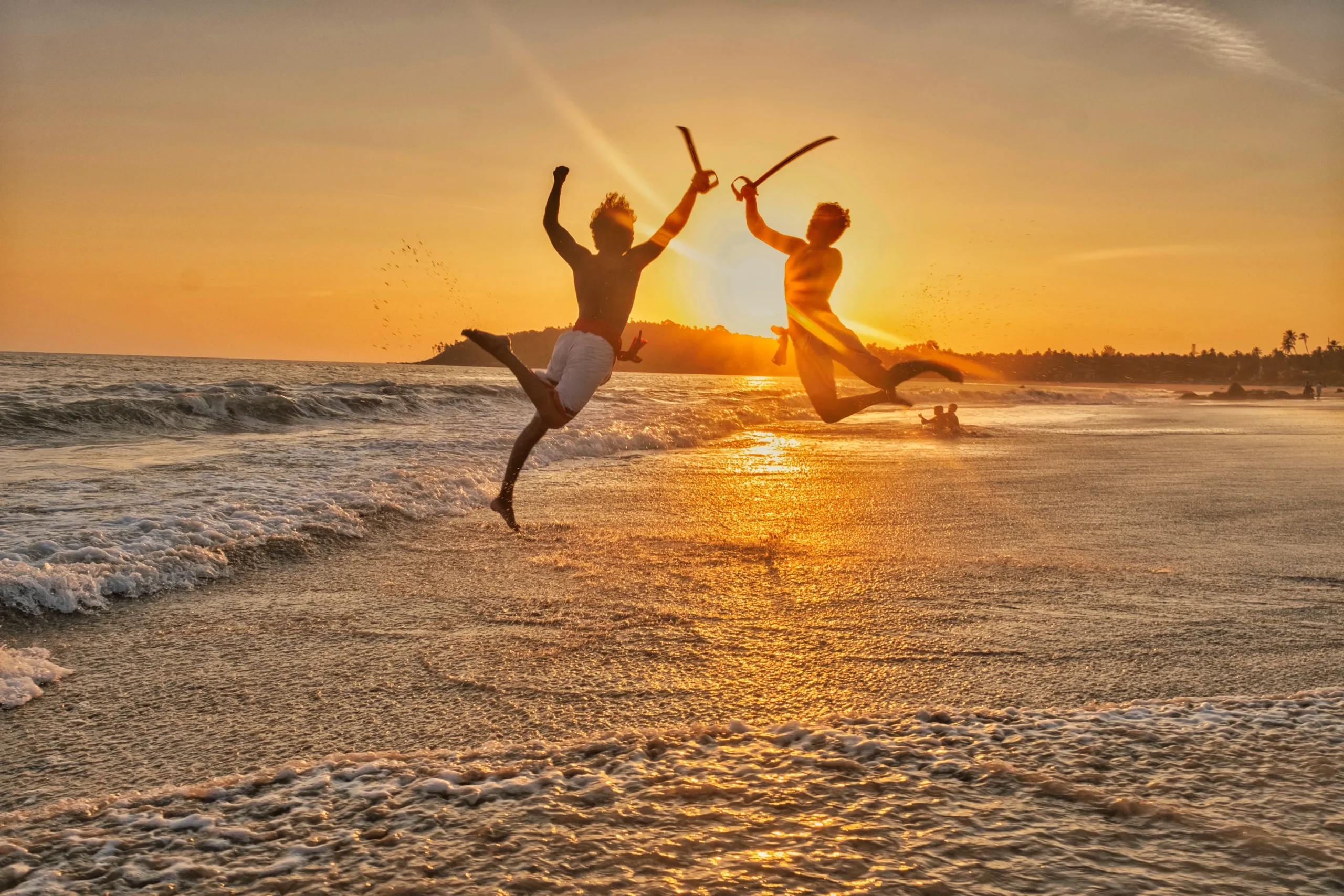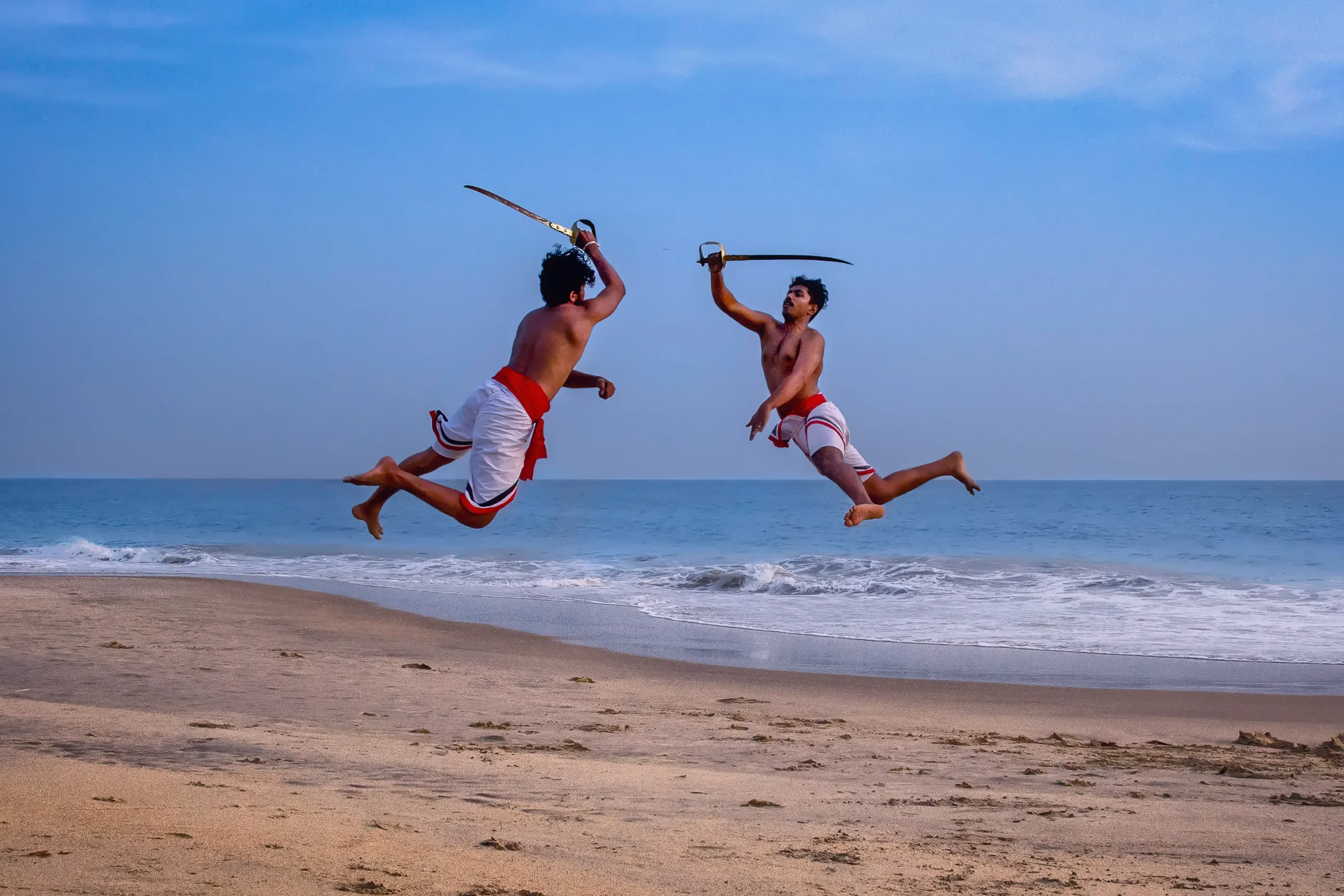Kalaripayattu
Kerala’s Ancient Martial Art and Living Legacy
When speaking of martial arts, the first one that comes to the fellow Keralite’s mind is Kalaripayattu, am I right?. As Keralites we all know this ancient Indian martial art is originated in our own land, Kerala.
Kalaripayattu is regarded as one of the ancient martial systems. It is a holistic discipline which combines physical expertise with mental and spiritual expansion. The term Kalaripayattu is derived from the Malayalam words kalari, which means f”battlefield” or “training ground,. The term payattu stands for “to fight” or “to practice”.
Now the world has evolved where AI rules, so you might wonder why anyone should care about Traditional martial practices today? Sounds like a reasonable question. But Kalaripayattu isn’t just an ancestral martial tradition. It is still alive, relevant, and it has even found a way to adapt to our current modern life.
There are a lot of people who practice Kalaripayattu martial art today. They often say it influences their body, mind, and spirit. It is proven that practising Kalaripayattu has a huge impact in improving fitness, flexibility, and even healing. It’s not just about fighting; instead, it’s about balance. For example, consider Yoga with a pulse, it merges discipline with grace, and strength flows with awareness.
In this blog, we are going to explore Kalaripayattu, one of the most fascinating traditional martial arts of India. We will walk you through its origins, styles, training, spiritual side, and how it connects with Yoga as well as Ayurveda.
The Origins of Kalaripayattu
Myth and Legend
We all know every Kerala cultural art has a story to tell. In the case of Kalaripayattu, it is not so different. It is known that Parashurama, who is considered the warrior-sage from Hindu mythology. He retrieved land from the sea to create Kerala, God’s own country. He then taught warriors to defend Kerala by creating the first-ever training ground, which is Kalari.
Whether or not you take the legend literally, it says something about the art’s depth. Early practitioners of Kalaripayattu didn’t just fight; they meditated, healed, and aligned their energy. In that sense, Kalaripayattu is related to Yoga, sharing the same spiritual DNA of practise and self-awareness.
Early Development
Over centuries, this martial system evolved beyond pure warfare. The Warriors began to integrate flexibility, breath control, and strength training, many of which these influenced by Ayurveda. They used herbal oils and massages to recover faster and move better. It wasn’t only about battle readiness; it was about wellness and vitality.
Influence on Kerala’s Culture
You can still see traces of Kalaripayattu in Kerala’s cultural arts. It can be seen in temple rituals, dances, and local festivals. There are a lot of factors that reflect through the region’s cultural expressions it including stances, the rhythm, and the meditative breathing. It combines spirituality, movement, and healing, so we can say that it’s a living tradition and all these factors coexist in perfect (and sometimes chaotic) harmony.
Styles and Techniques
Not all Kalaris are the same. Different regions of Kerala developed distinct approaches, each reflecting its own philosophy.
Vadakkan Kalari – The Northern Style
Vadakkan Kalari is centred around weapons such as sticks, swords, and sand pears. In this style, movements are more fluid, we could say almost like a dance, yet every motion has a specific intent.
Watching a skilled practitioner feels hypnotic, because of which grace meeting precision, power guided by rhythm.
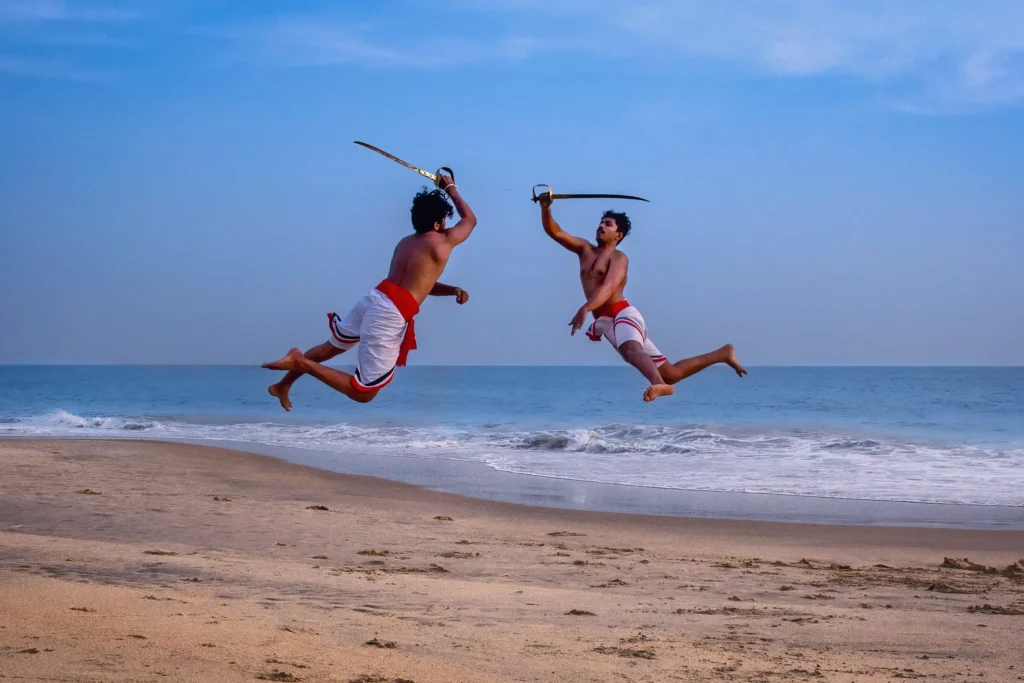
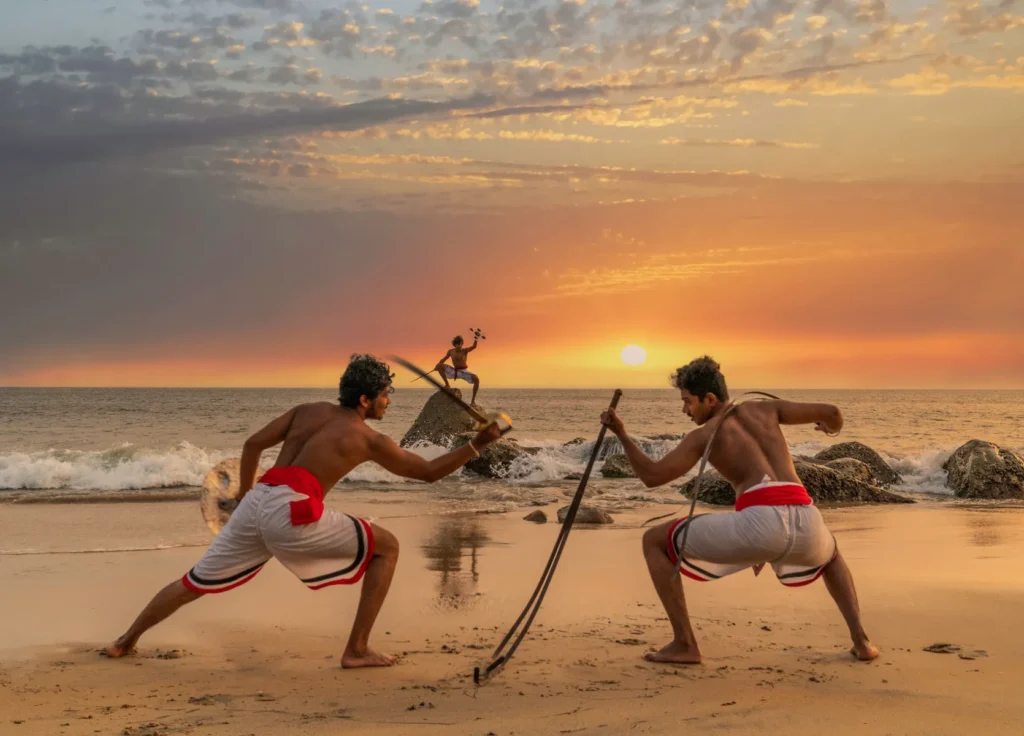
Thekkan Kalari – The Southern Style
In contrast, Thekkan Kalari focuses on close combat. It contains swift strikes, fast footwork, and deep breath control (very much like Pranayama). It’s more grounded, more forceful, yet still deeply mindful.
Despite their differences, both share the same soul: mastering energy through movement.
Inside the Kalari – Where Training Begins
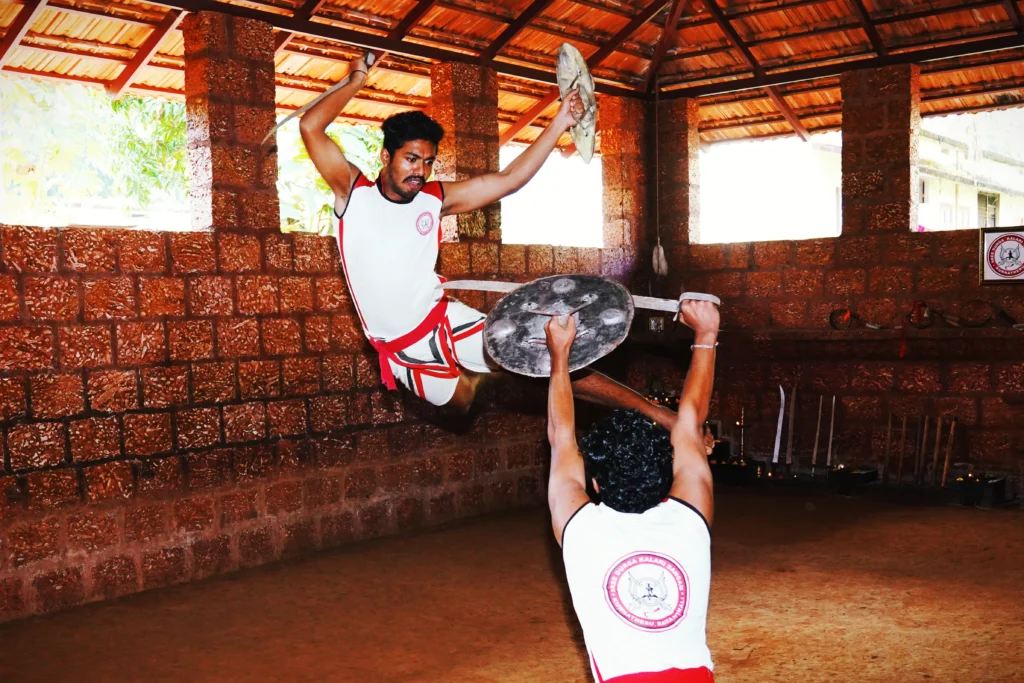
The Training Space
Training happens in the Kalari. It is a sunken, earthy pit believed to connect practitioners with the energy of the land. Before each session, prayers or small rituals are performed. Some call it spiritual, others see it as mental preparation, but either way, the space feels sacred.
Daily Practice
Kalaripayattu training merges strength work, flexibility drills, and meditation-like focus. Many of kalaripayattu martial art moves are inspired by Yoga postures, with paying focus on breath and flow. Over time, the practice becomes almost meditative. In which movements are synced with awareness.
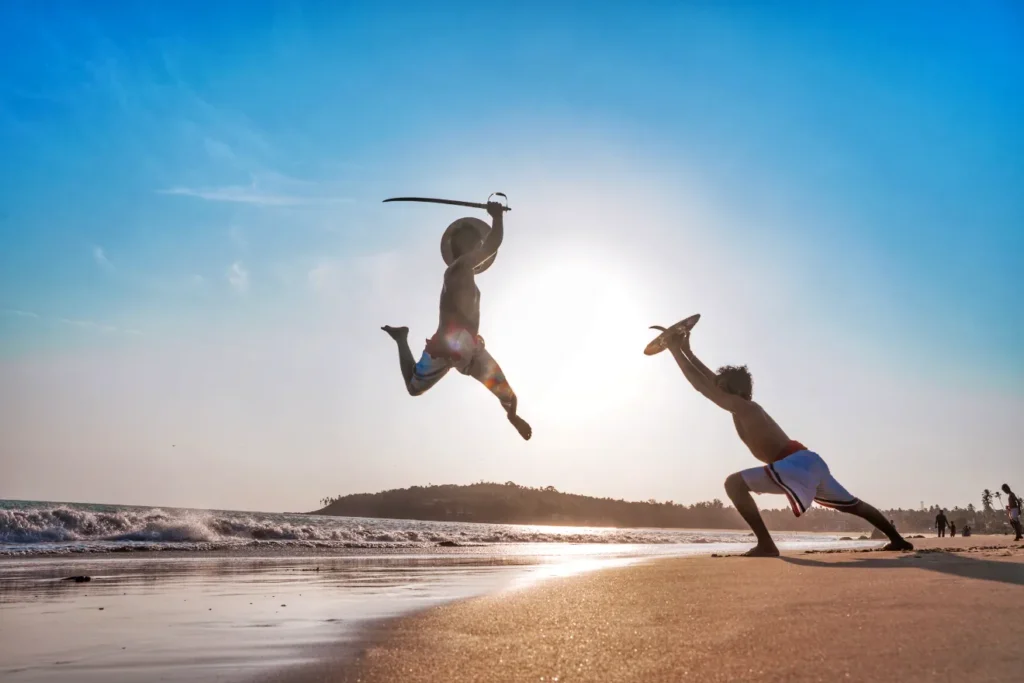

Weapons and Awareness
Weapons are introduced gradually. The first weapon is wooden sticks, then come metallic ones like swords and spears. It’s not about sheer strength, it’s about accuracy, timing, and knowing how to redirect energy. There’s a thoughtful insight behind every movement.
Healing Through Touch
One of the most fascinating parts of Kalaripayattu martial art is Uzichil. It is the traditional oil massage. It will makes the body flexible, avoids injuries, and encourages recovery. This system, connected with Ayurveda, treats the body as both a weapon and a temple. Long before sports science, they already knew recovery mattered.

KALARIPAYYATU PERFORMANCE (Sree Durga Kalari Payyannur)
Kalaripayattu and Spirituality
It is the spiritual level which is the most subtle one; however, it is always there. All these things – meditation, focus, and mindfulness – are used in every minute of practice. One learns to be calm even in a difficult situation, to have control over one’s breath and to restrain the emotional reaction. There is something very beautiful and harmonious in the way the physical side of the body is united with the spiritually calm one.
Rituals before training includes lighting lamps, short prayers, or offerings. This might seem symbolic, but they set the tone. They remind you that this isn’t just physical work. It’s an act of respect toward the art, your teacher, and your own body.
Kalaripayattu in the Modern World
Presently, Kalaripayattu goes well beyond Kerala geographically. There are a lot of schools and workshops all over the globe, such as in India, Europe, and the U.S. It is a source of inspiration not only for martial artists but also for dancers, yogis, and those who are into holistic fitness.
Modern wellness retreats often blend Kalaripayattu training with Yoga and Ayurveda. The result? A system that feels both ancient and ahead of its time.
It’s also made its traces in art such as movies, theatre, and contemporary dance constantly borrow its movements for choreography. The surprising fact is that this ancient form still manages to inspire creativity in completely new contexts.
Learning Kalaripayattu Today
If you’re curious, finding the right Kalari matters. Look for schools led by masters who blend tradition with awareness those who see the art not just as combat but as a complete lifestyle.
Starters should keep things simple: work on posture, breath, and balance. Improvement may seem to be very slow, and that is perfectly fine. Kalaripayattu is a martial art that imparts patience just as much as it imparts self-defense.
So, what are the advantages? Practically, endless. Strong physique, peaceful mind, improved concentration, and increased range of motion. It makes one’s reflexes more acute, but at the same time, it makes one’s ego more humble, which is a very rare attribute in any discipline.
Kalaripayattu is more than a martial art; it is a living tradition. It successfully communicates the old wisdom in a new light, promoting well-being. It is a system that unites the body, mind, and energy through movement similar to yoga and ayurveda.
If you are a fan of holistic health, spiritual meditation, or simply looking for a different way of moving your body, then Kalaripayattu martial art is definitely your choice. It’s not just about fighting; instead, it instructs you to flow, heal and connect.
Perhaps this is the reason it remains alive after such a long time. Power is not the main thing – it’s being there.
Would you like to know more about Kalaripayattu or Kerala Cultural Arts? Visit our website
Frequently Asked Questions
How is Kalaripayattu connected to Ayurveda and healing?
How does Kalaripayattu differ from Yoga?
Yoga focuses on postures, breath, and meditation, while Kalaripayattu adds martial techniques, weapon training, and dynamic movement. Nevertheless, both share a focus on mind-body alignment and energy flow.
What are the main benefits of learning Kalaripayattu?
How is Kalaripayattu relevant in modern life?
Apart from self-defence, it is a means of achieving holistic fitness, stress control, and mental clarity, and inspires contemporary movement arts, dance, and wellness practices worldwide.
